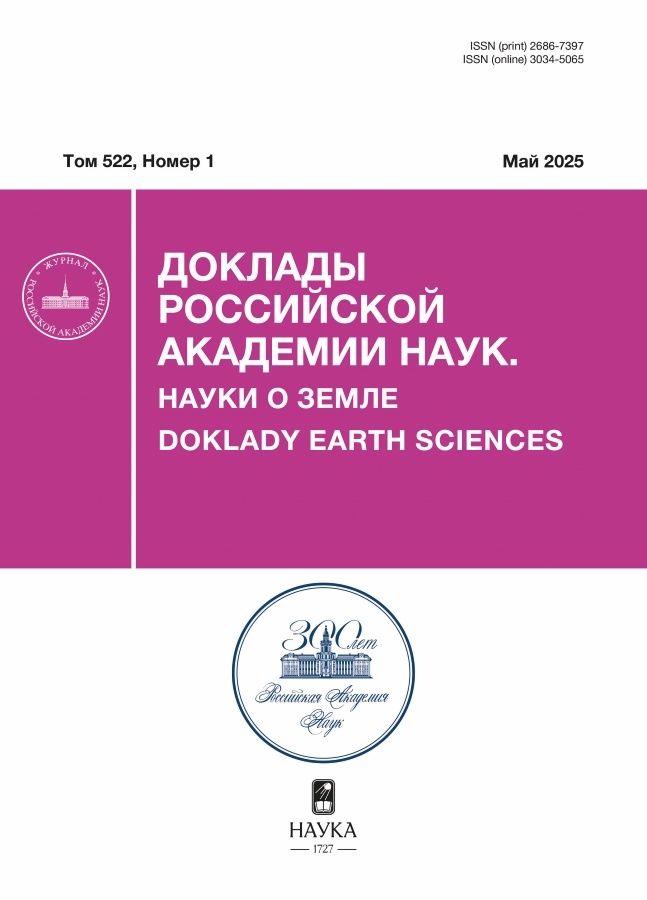Equations of Elastic Bending of Lithospheric Plates
- Autores: Trubitsyn V.P.1, Trubitsyn A.P.1
-
Afiliações:
- Shmidt Institute of the Earth’s Physics, Russian Academy of Sciences
- Edição: Volume 522, Nº 1 (2025)
- Páginas: 83-87
- Seção: GEOPHYSICS
- ##submission.dateSubmitted##: 15.10.2025
- ##submission.datePublished##: 15.12.2025
- URL: https://genescells.com/2686-7397/article/view/693280
- DOI: https://doi.org/10.31857/S2686739725050102
- ID: 693280
Citar
Texto integral
Resumo
At present, the bending of the lithosphere is studied on the basis of Kirchhoffʼs (1845) thin plate bending equations. However, they give an error of ~15% in the bending of thick blocks, when the thickness to length ratio is h/L = 1/4. More accurate equations of bending of thick plates by Timoshenko (1922) and Reisner (1945) are used in engineering. But even they still contain inaccuracy, because they do not take into account transverse compression in bending. The authors have obtained new more accurate equations of bending of thick plates of the second approximation, taking into account all deformations at bending, which makes them, unlike the Timoshenko–Reisner equations, mathematically completely correct. By refining the Timoshenko and Reisner equations, the new second approximation equations are not complicated, since only the numerical coefficient in the ordinary differential equation for the bending function is changed and explicit additive terms in the algebraic expressions for longitudinal stress and longitudinal and transverse displacements are added. Compared to the more complex general partial elasticity equations, the resulting bending equations neglect only small fourth-order terms (h/L)4, which, even for thick plates with a thickness equal to one-quarter of the length, are only about one percent. A universal analytical solution of the new equations, which gives a more accurate stress and strain field, has been obtained as an application to oceanic plate bending.
Palavras-chave
Sobre autores
V. Trubitsyn
Shmidt Institute of the Earth’s Physics, Russian Academy of Sciences
Email: atrub@yandex.ru
Moscow, Russia
A. Trubitsyn
Shmidt Institute of the Earth’s Physics, Russian Academy of Sciences
Email: atrub@yandex.ru
Moscow, Russia
Bibliografia
- Тимошенко С.П., Гудьер Дж. Теория упругости. М.: Наука, 1975. 550 с.
- Трубицын А.П., Трубицын В.П. Поправки к теории упругого изгиба тонких плит для 2D-моделей в приближении Рейснера // Физика Земли. 2023. № 4. С. 3–15.
- Трубицын В.П., Трубицын А.П. Сравнительный анализ и единый вывод уравнений Тимошенко для изгиба балок и уравнений Рейснера для 2D-изгиба толстых плит // Физика Земли. 2024. № 2. С. 98–111.
- Szilard R. Theories and Applications of Plate Analysis: Classical, Numerical and Engineering Methods. John Wiley & Sons Inc., 2004. 1024 p.
- Теркот Д., Шуберт Дж. Геодинамика. М.: Мир, 1985. 360 с.
- Zhang F., Lin J., Zhou Z. Flexural bending curvature and yield zone of subducting plates // International Geology Review. 2019. V. 62. No. 7–8. P. 859–886. https://doi.org/10.1080/00206814.2019.1671237
Arquivos suplementares










